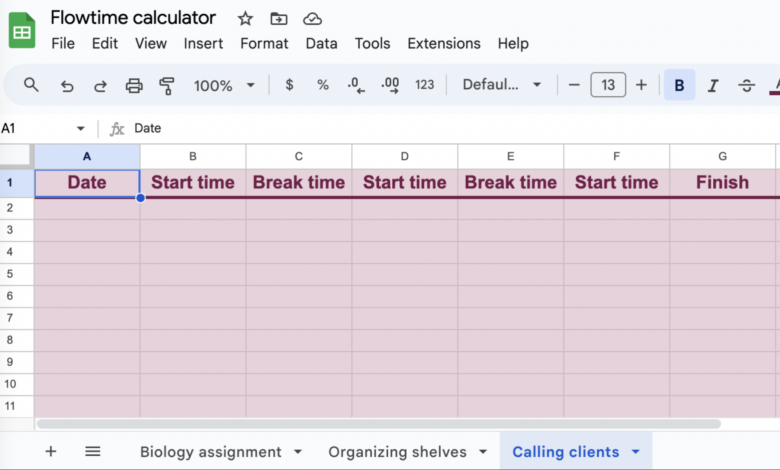Use ‘Flowtime’ As a Flexible Alternative to the Pomodoro Technique

We may earn a commission from links on this page.
The Pomodoro technique is the superstar of the world of productivity methods because its premise—that you should work hard for 25 minutes, then reward yourself with a few minutes off—is effective and appealing. But that doesn’t mean it works perfectly for everyone. Like anything else, it’s adaptable. Try the flowtime technique if you find that 25-minute work sessions with five-minute cooldowns aren’t cutting it for you.
What is the flowtime technique?
The flowtime technique is a spin on Pomodoro, and as such, relies on the same principles: You work for a while, then get a break. The difference is that you determine how long the work and play time last. Sometimes referred to as “flowmodoro,” this method is also all about keeping you in the zone on a task, luring you into deep work by using the goal of taking a break to keep you going.
The key here is the uninterrupted work you do while you’re gunning for that break. Like Pomodoro, you’re supposed to stay focused intently on a single task for the duration of your grind time, rather than do a little work, check your phone, type a little more, check your email, etc. The only way flowtime is truly different is that you decide how long you work for, instead of relying on the “25 on, five off” framework. With Pomodoro, you are stricter, typically using a timer to keep you working and from checking your phone. You may not think you need the timer with the flowtime technique, but you should use one that has a stopwatch function to track how long you actually end up working and keep it on hand for days when you need the extra structure of the timer itself. In fact, once you finish a few days of flowtime and figure out your own working habits with the stopwatch, you’ll need the timer so you can set it in personalized increments.
How to set up your personal flowtime
The downside to using flowtime over Pomodoro is the same as the upside: You’re in charge of how long you work. While the Pomodoro technique is straightforward and outlines exactly how long you get to work and play, setting up your personal flowtime requires a little bit more work. You’ll need about a week to figure it out before you really put it into action.
During this exploratory setup period, here’s what you do:
-
Track when you start working on a specific task with no distractions. You can use time-tracking software, but in this case a spreadsheet might be better because you also …
-
Write down when you start feeling restless, distracted, or disinterested. Check your stopwatch to see exactly how long you were working, then take a break.
-
Jot down when you feel energized enough to get back to the task and restart your stopwatch.
-
Repeat until the task is done.
In a spreadsheet, dedicate one sheet to each task that needs to get done. Your columns can be labeled however makes sense to you, but something like the below—including a date, start and break times, and an ultimate conclusion time—is helpful. After using the spreadsheet for a while, you’ll get a sense of how long you can usually stand working on something before you need a break, and how long those breaks typically need to be for you to feel rejuvenated enough to get back at it.

Credit: Lindsey Ellefson
Once you have a sense of your own work abilities and preferences, you can put them into action. If you can usually focus on cleaning for 15 minutes, start setting your timer for 15 minutes every time you clean, then give yourself a break that works for you, whether it’s five or 10 minutes. Commit to getting back to the task.
You can challenge yourself to add more time to your work sessions gradually, but that’s optional. If your specific method is working for you, great. If you want to get better at focusing for long periods of time, start by adding one minute every time you do a task, inching it from, say, 15 to 16 to 17 minutes every time. It’s helpful to use the spreadsheet if you plan to do this, so you can see if you’re starting to tap out too early and readjust your flowtime.
This isn’t an easy way out if Pomodoro doesn’t work for you. Rather, it’s a challenge to find a time combination that does work for you. Something is always better than nothing, so find the flowtime that fits your needs and tap into the power of uninterrupted work with the promise of breaks, even if it looks a little different from the norm. Don’t get discouraged if you don’t feel like you’re working in long enough chunks at first; productivity falls off when you don’t give yourself enough breaks, so look at this as a way of making sure that doesn’t happen.


